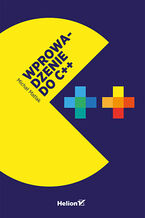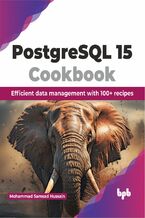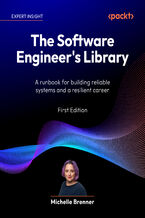
Learn LLVM 12. A beginner's guide to learning LLVM compiler tools and core libraries with C++ Kai Nacke




- Autor:
- Kai Nacke
- Serie wydawnicze:
- Learning
- Wydawnictwo:
- Packt Publishing
- Ocena:
- Stron:
- 392
- Dostępne formaty:
-
PDFePubMobi
 opcje wysyłki »
opcje wysyłki »
Opis
książki
:
Learn LLVM 12. A beginner's guide to learning LLVM compiler tools and core libraries with C++
You’ll start by configuring, building, and installing LLVM libraries, tools, and external projects. Next, the book will introduce you to LLVM design and how it works in practice during each LLVM compiler stage: frontend, optimizer, and backend. Using a subset of a real programming language as an example, you will then learn how to develop a frontend and generate LLVM IR, hand it over to the optimization pipeline, and generate machine code from it. Later chapters will show you how to extend LLVM with a new pass and how instruction selection in LLVM works. You’ll also focus on Just-in-Time compilation issues and the current state of JIT-compilation support that LLVM provides, before finally going on to understand how to develop a new backend for LLVM.
By the end of this LLVM book, you will have gained real-world experience in working with the LLVM compiler development framework with the help of hands-on examples and source code snippets.
Wybrane bestsellery
Zobacz pozostałe książki z serii Learning
Packt Publishing - inne książki
Dzięki opcji "Druk na żądanie" do sprzedaży wracają tytuły Grupy Helion, które cieszyły sie dużym zainteresowaniem, a których nakład został wyprzedany.
Dla naszych Czytelników wydrukowaliśmy dodatkową pulę egzemplarzy w technice druku cyfrowego.
Co powinieneś wiedzieć o usłudze "Druk na żądanie":
- usługa obejmuje tylko widoczną poniżej listę tytułów, którą na bieżąco aktualizujemy;
- cena książki może być wyższa od początkowej ceny detalicznej, co jest spowodowane kosztami druku cyfrowego (wyższymi niż koszty tradycyjnego druku offsetowego). Obowiązująca cena jest zawsze podawana na stronie WWW książki;
- zawartość książki wraz z dodatkami (płyta CD, DVD) odpowiada jej pierwotnemu wydaniu i jest w pełni komplementarna;
- usługa nie obejmuje książek w kolorze.
Masz pytanie o konkretny tytuł? Napisz do nas: sklep@helion.pl
Książka drukowana











































Oceny i opinie klientów: Learn LLVM 12. A beginner's guide to learning LLVM compiler tools and core libraries with C++ Kai Nacke
(0)